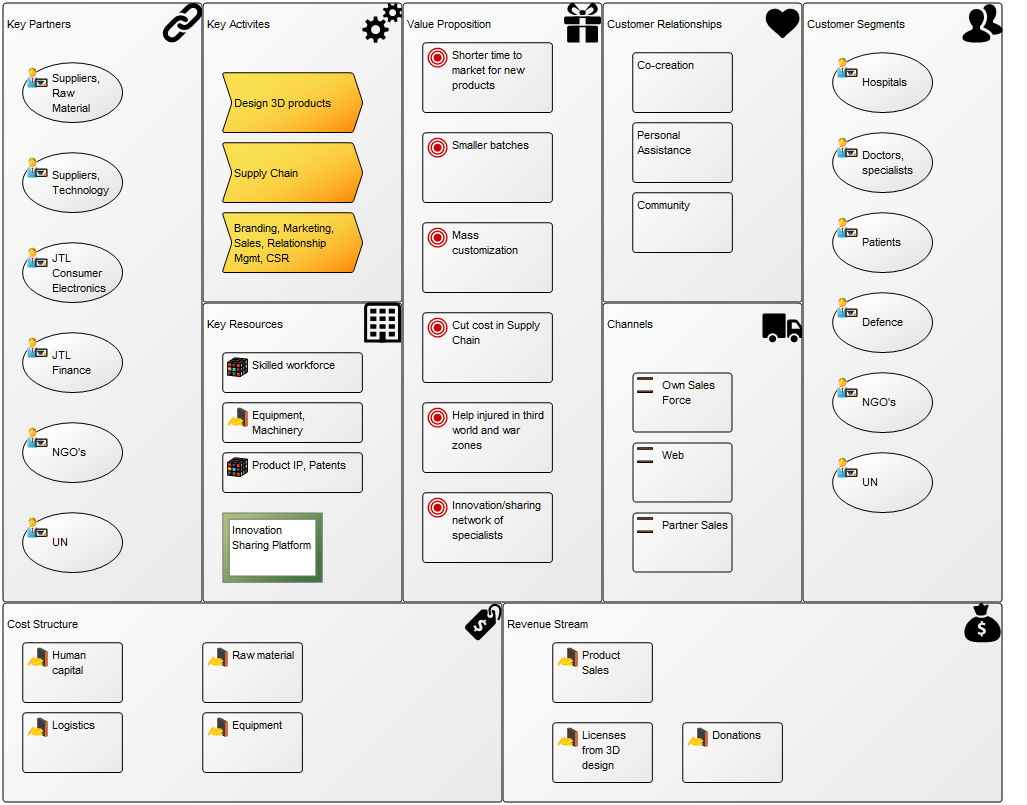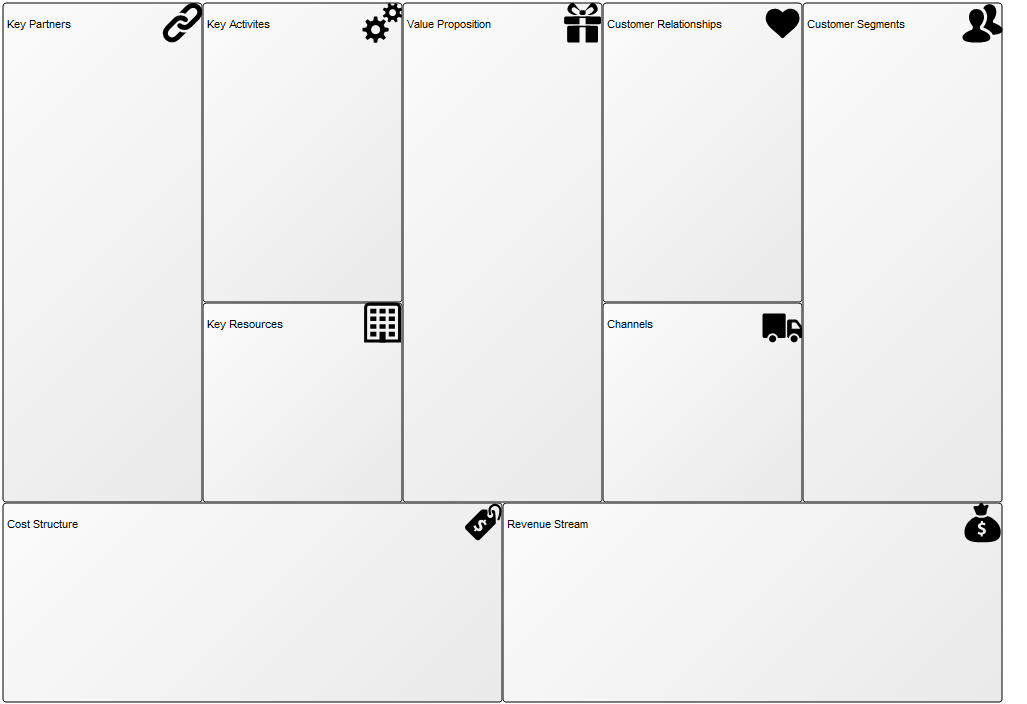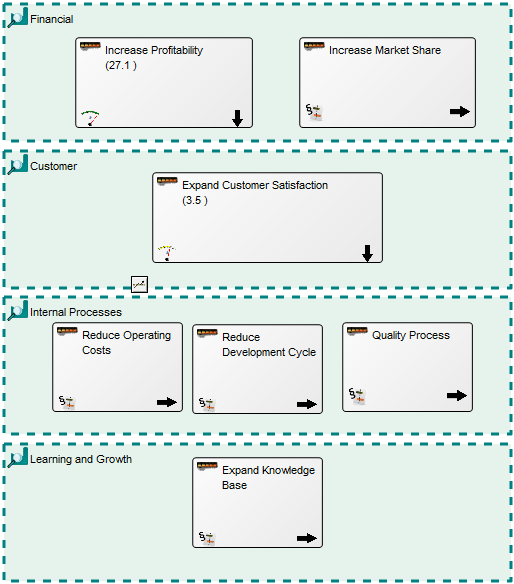For a quick introduction to BusinessCharts please see the video below as it explains how to create a BusinessChart based on Pie charts.
The video contains:
- How to use the QML to create charts
- How to customize the charts
- An introduction to the versatility of using charts in QualiWare
Purpose: The purpose of the Business Chart template is to create different graphs and charts using information from other diagrams and templates. The Business charts can then either be published on a Dashboard and/or stored.
Core concerns: The Business Chart template is concerned with analyzing other templates and models. Therefore, it is not modelled like a typical template, but created using the Chart Wizard found in the template’s property window:
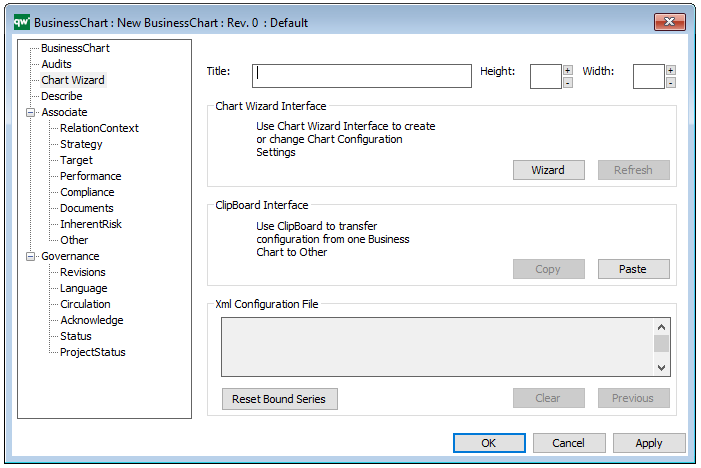
Below, you can see the Chart Wizard that helps you create your Business Chart:

The Business Chart template can for example be used to generate a chart over how the capabilities or Key Performance Indicators of an enterprise are performing over time or compared to desired values. Additionally, Business Charts can be used to analyze static data entered in a Matrix model. You choose the input to your Business Chart as a ‘Data Source’ in the templates metadata (see figure under Metadata).
Below, you can see two very different examples of business charts:
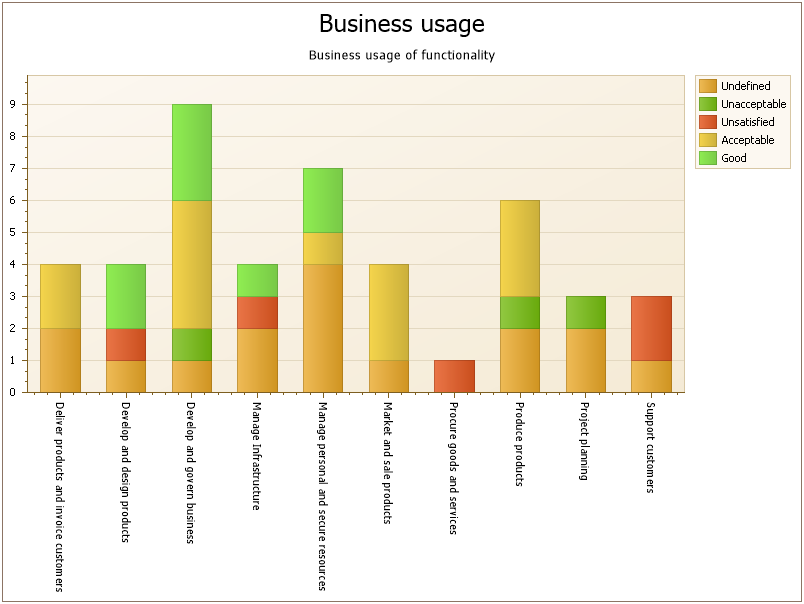
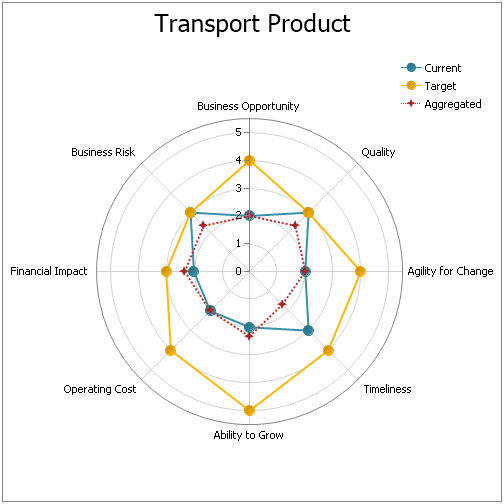
Relation to other templates: The Business Charts are published using the Dashboard template.
Properties and metadata: The Business Chart template can for example retain the following information:
- A description of the diagram
- Link to the owner of the business chart
- Link to the one responsible for the business chart
- Link to data source
- Audits (auto generated information regarding its current state and access rights)
- Associated documents, diagrams and other objects
- Inherent Risk detailing risk considerations
- Governance information detailing information about the published diagram and who has been involved in the approval of the diagram
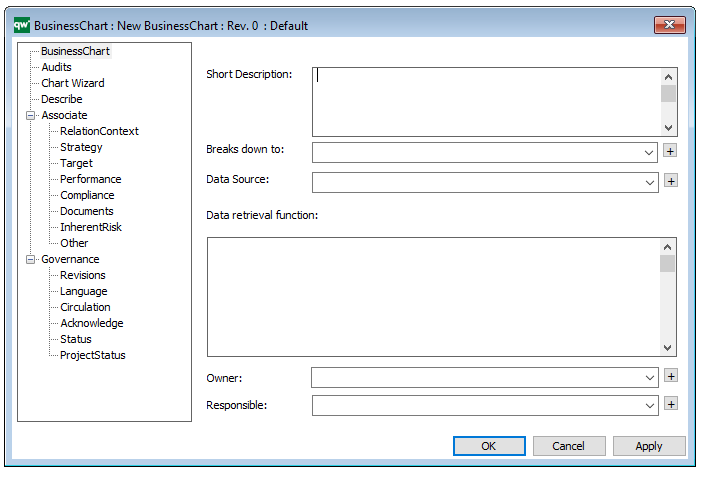
The above picture shows the properties dialogue window for the Business Chart Template where you can view and edit the diagram’s properties in QualiWare Lifecycle Manager.

